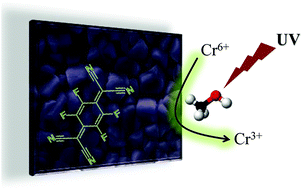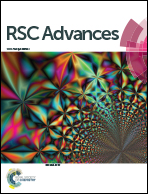Nanostructured charge transfer complex of CuTCNQF4 for efficient photo-removal of hexavalent chromium†
Abstract
The high toxicity of hexavalent chromium warrants the development of efficient catalysts that could reduce chromium into relatively non-toxic trivalent chromium species. Pristine charge transfer complexes of the MTCNQ family (M = Cu or Ag; TCNQ = 7,7,8,8-tetracyanoquinodimethane) have previously failed to catalyse the reduction of Cr6+ to Cr3+. We demonstrate that due to the outstanding electron transfer properties of one of the fluorinated derivatives of MTCNQ, i.e., 7,7,8,8-tetracyano-2,3,5,6-tetraflouroquinodimethane (CuTCNQF4), it is able to catalyse the reduction of hexavalent chromium in aqueous solution at room temperature. We further demonstrate that the semiconducting nature of these organic charge transfer complexes allows CuTCNQF4 to act as an outstanding material for the reductive photo-removal of hexavalent chromium under UV photoexcitation conditions. Such materials are likely to play an important role in photoactive electron transfer reactions.



 Please wait while we load your content...
Please wait while we load your content...